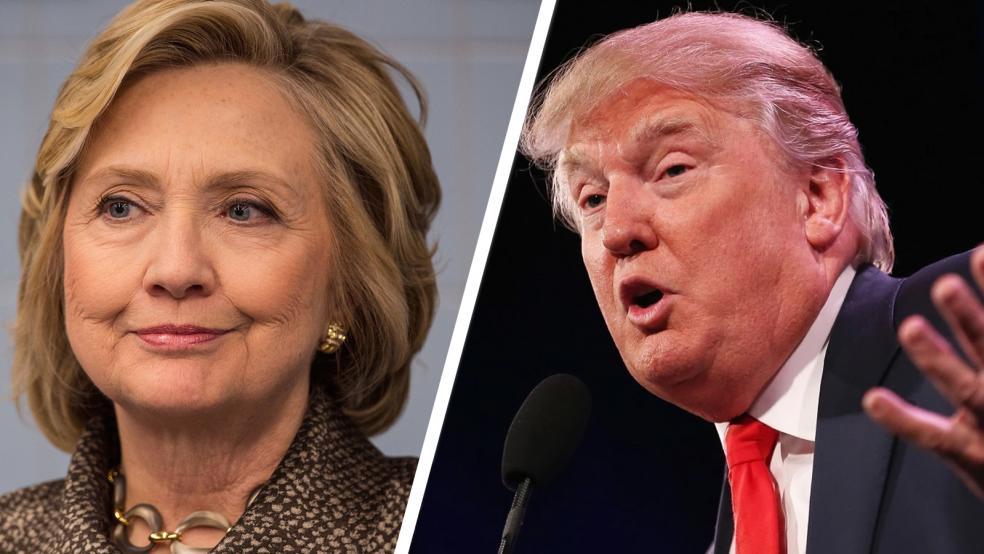Those among us who took a breather from following the presidential race over the holiday weekend snapped back into reality Tuesday with a barrage of new polling data that was, to say the least, confusing. A CNN poll shows Donald Trump suddenly surging ahead of Hillary Clinton by two percentage points, while the latest from the Morning Consult has Clinton ahead by the same margin.
Over at the Washington Post, an unconventional 50-state survey done in conjunction with the online polling platform SurveyMonkey shows Clinton with a large electoral college advantage. However, it includes some genuinely eyebrow-raising findings, including a one-point Clinton lead in, of all places, Texas, and a tight race in reliably Republican Mississippi.
Related: The Weasel in Hillary Clinton: Why That May Not Be a Bad Thing
So, what is one to make of the data that seems all over the map? Experts advise trying to gain some perspective.
“I think the best thing to do is not to obsess over any one poll but instead to use the Real Clear Politics and Huff Post Pollster polling averages,” said Kyle Kondik, managing editor of Sabato’s Crystal Ball at the University of Virginia’s Center for Politics.
“The averages show a narrowing race in national polls, though Clinton is still up, and the state-level polls show Clinton up in enough places to win,” Kondik said. “We’ll see if that changes.”
Sean Trende, the senior elections analyst at RealClear Politics, said that all polls assume a margin of error, which means that each candidate’s real-world percentage of the vote could differ from the result in an individual poll by several percentage points.
Related: Clinton’s Email Mess Hands a Lifeline to the Floundering Trump Campaign
Moreover, even the most meticulous polls typically have a 95 percent confidence interval. What that means, Trende said, is that “We know that one out of 20 polls is going to fall, statistically, outside the error margin.” In other words, he said, 5 percent of polls are “just plain wrong.”
“Even if you run a perfect poll, the margins of error are real,” Trende said. “There is nothing you can do about them.”
That’s why, if you’re curious about the real state of the presidential race, the polling averages are a more reliable indicator of what’s going on. In statistical analysis, survey averages benefit from the Central Limit Theorem, which holds that the average of a large number of samples will tend to reflect reality better than any individual sample.
In layman’s terms, Trende said, “We correct for outliers. If you have four polls and one of them is an outlier, the average is going to pull that outlier toward the center -- towards the true value.
Related: Most Forecasters Predict a Win for Clinton, Except for Two
Right now, the polling averages still show Clinton with a comfortable, though shrinking, lead. RealClear Politics gives her a 3.3 percentage point advantage, while Huffington Post Pollster has her 5.6 percentage points ahead. (The difference is attributable to the different polls that the two sites choose to include in their averages.)
However, Trende noted that averages are not the final word in a volatile election. “Every major shift in a race is first identified by a poll that looks like an outlier,” he said. As an example, he offered the 2014 New Hampshire Senate race between Sen. Jeanne Shaheen and former Massachusetts Sen. Scott Brown.
“Last cycle, Jean Shaheen had consistent double digit leads over Scott Brown,” he said. “Then all of a sudden, a poll came out showing a three-point race.” Though it was widely regarded as an outlier at the time, it proved to have marked a real change in a race that Shaheen, originally a heavy favorite, ultimately won by those three points.
Related: The Real Threat to the Election Could Be a Sore Loser
That’s why, Trende said, it’s smart to not completely dismiss unexpected results -- like the Washington Post poll showing Clinton ahead of Trump in deep red Texas.
“There are two groups that Donald Trump does poorly with -- historically poorly for a Republican -- Evangelicals and Hispanics,” he said. “And Texas has a lot of both. So, I don’t think Clinton will win that in a close election, but I do think Texas has a good chance of being closer than usual.”





